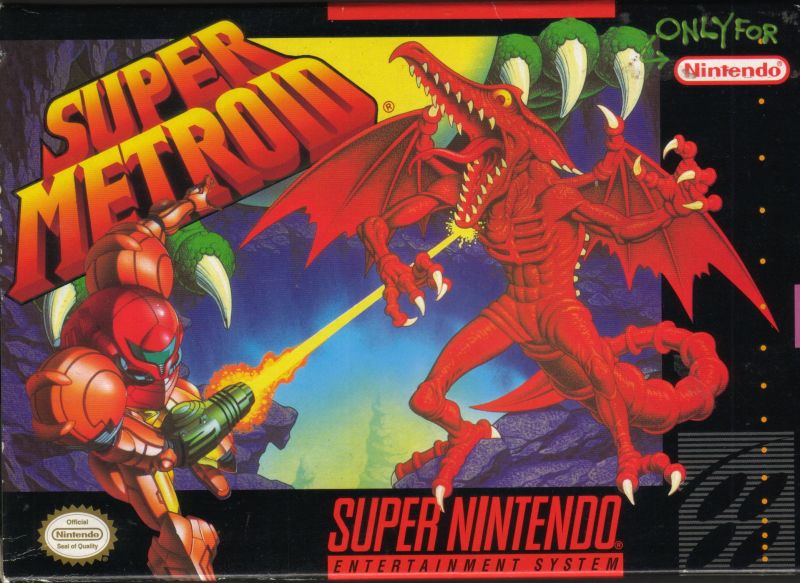You’ll be hard-pressed to find someone who would disagree that Super Metroid is one of the best games on the Super Nintendo (or Super Famicom if you somehow made it to this article and grew up with that). It introduced the Metroidvania genre, was a great showing of the SNES’ sound chip, and provided everyone who saw it with a prime example of Nintendo Power. So why do we need to talk about it today in 2017? Because I believe it’s one of the few SNES games that we don’t love enough and if released today, would be more recognized as a masterpiece than it is currently as a retrospective.
And I can already hear you “I love Super Metroid! It’s one of my favorite games!” And bully for you. Skip to the end and enjoy being the outlier in a world where more people are Zelda and Mario fans than Metroid fans. I want to remind everyone who forgot that this game is one of the best pieces of art to come out of The Big N. Yes, art is subjective, and you can look at any old Super Metroid footage and move on, taking note of the impressive sprite work, atmospheric music, and every other superficial part of the game that makes it art in a traditional sense saying “yep, Nintendo done did good.” But it’s the experience of Super Metroid that makes it so damn amazing. Actually holding the controller in your hands, starting a fresh save, and escaping from Ceres Station with nothing but your ship and the armor on your back pulls you in in a way no other SNES game can quite claim to. There aren’t any overworlds, linear dungeons, or exposition-packed cutscenes. You, the player, must explore and progress through a world dying to kill you.
The progression system in Super Metroid is easily what most people remember, and why it bears half the Metroidvania namesake. But when you slow down and think about it, at the time, this sort of progression was unheard of. Unless you played the original Metroid on NES (nobody played the original Metroid on NES, c’mon), you would NEVER find a platformer where you must go left to progress. It makes no sense. We read from left to right, our protagonists should move left to right, I demand a refund on my 23-year-old game FuncoLand! …Alright nobody said that, but it was a definite change to be sure. It leads to a curiosity that lends well to the exploration-based gameplay.
Nothing is given to you. You are not directed, and you are not helped. Everything you do from the moment you land on Planet Zebes is all up to the player, not quite giving you a choice, but giving you more control over your progression. On a primary playthrough, you could easily waste hours making no progress as you explore and find out where to go next, the game actively teaching you how to use your newfound abilities along the way without a single tutorial (outside of button inputs). It’s brilliant. Every time you feel like you might be onto something, it seems every corner is loaded with rewards for it, so even if you didn’t find the progression, you now have five extra rockets to blow away any big bad the game might throw at you once you do move on.
The atmosphere keeps exploring tense and fun. The game is always throwing new mechanics and enemies at you; at one point there’s even a boss that attacks you out of nowhere without any warning, forcing you to adapt and overcome. All of this is framed by an understated soundtrack that remains to be not only one of the best on the system, but one of the best in all of gaming. There aren’t many catchy tunes like the Hyrule Overworld theme or the Athletic Theme from A Link to the Past or Super Mario World respectively, but once you hear a single track from Super Metroid, you’ll be put back into the dark foreboding hallways and tunnels of Planet Zebes.
The music enhances the experience so drastically that I don’t feel it would be the same game without it. There’s a moment where you enter a wrecked ship back up on the surface of the planet, and while the new enemies and environmental hazards show the player that it’s haunted, the intimidating soundtrack makes the player know that it’s haunted and should not be taken lightly. This kind of sound design wouldn’t become commonplace until years after the release of Super Metroid, where it was used in horror games like Resident Evil. To this day, horror games are rated by their sound design and its ability to intimidate and shake up the player and their expectations, and I truly feel that Super Metroid is the trendsetter to this practice that not only defines proper sound design in horror games, but sets the bar much higher than it’s given credit for.
I could easily go on about the amazing graphic design, what with its beautiful colors and spritework to its slight 3D parallax backgrounds adding that extra bit of depth to this already deep game, but I think I’ve said enough. Super Metroid has stood the test of time for over 20 years and I believe will continue to long after this retro indie fad fades back into obscurity. If games like Axiom Verge, Hollow Knight, and Cave Story are any indication, there will always be pretenders to the throne, but there will only ever be one Super Metroid.
Some of the coverage you find on Cultured Vultures contains affiliate links, which provide us with small commissions based on purchases made from visiting our site. We cover gaming news, movie reviews, wrestling and much more.



